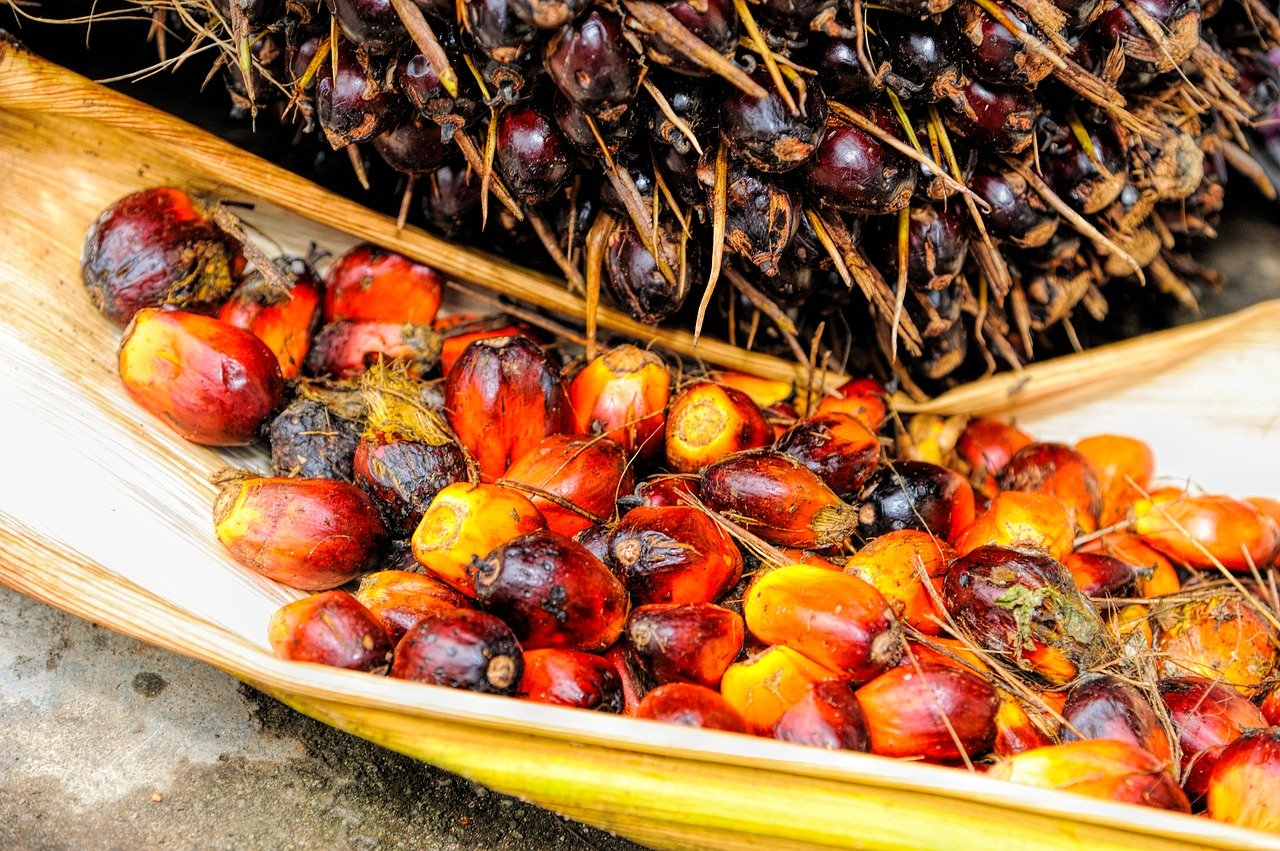
Why Palm Oil is a Disastrous Skin Care Ingredient
One of the worst environmental disasters in our history is currently unraveling, destroying some of the most biologically diverse rainforests in the world and affecting the lives of millions of people.
I'm referring to palm oil, the simple ingredient contained in most of the packaged things we eat and put on our skin.
- Overview of the palm oil industry
- Palm oil is virtually found in everything
- The devastating effects of palm oil production
- Palm oil's relationship with skin care
- What palm oil is doing in your skin care products
- List of common palm oil derivatives to avoid
- The stance cruelty-free companies are taking
- The progress of sustainability
- Is the RSPO helping to protect rainforests?
- The RSPO is greenwashing the palm oil industry
- Palm oil can become sustainable
- The companies that are pioneering change in the industry
- What you can do to protect Earth
Why palm oil is an environmentally disastrous skin care ingredient
Overview of the palm oil industry
In recent decades, Southeast Asia has seen unsustainable palm oil expansion explode into their tropical rainforests.
Its production has left behind massive deforestation, widespread toxic pollution, severe spikes in CO2 emissions, a slew of civil rights violations, and has led numerous species of animals to the brink of extinction, including the orangutan—our closest living relative.
Deforestation is occurring all over the world, so why does this specific industry actually matter? Palm oil has quickly become the world's most widely traded vegetable oil, and its plantations cover a size larger than Bangladesh, at 15 million hectares globally.
Every hour in Southeast Asia, palm oil plantations clear 300 football fields of forest. Encroaching upon precious habitat, it's estimated by the UN that orangutans will no longer exist outside of protected areas in the wild by 2020. The fate for other endemic species, as you'll find out, is much worse.
Many of the largest global brands - including Procter & Gamble, PepsiCo, Nestlé, General Mills, Unilever, Campbell Soup Company, and many more - directly lie about their "no-deforestation policies" and purchase palm oil at the expense of critical protected rainforests.
This isn't even scratching the surface.
With the current production of more than 60 million tons of palm oil projected to double in the next decade, you'll see why immediate action is absolutely necessary for the health of our planet.
Palm oil is virtually found in everything
Coconut and olive oils may reign supreme in the consumer popularity department, but palm oil has sneakily taken the lead as the world's most widely traded vegetable oil.
As a high-yielding crop, its cultivation is at least 10 times cheaper than soy, a once-industry leader. It's also extremely resistant to rancidity, lending its use to the food, cosmetic, and skin care industries.
Palm oil can be found in everything from toothpastes and moisturizers, to diesel fuel tanks, laundry detergents, and chocolate bars.
Palm oil is found in 50% of the world's packaged food products. An even higher 70% of cosmetic and skincare products contain palm oil and its derivatives, according to Croda global accounts vice president, Chris Sayner.
Palm oil production is steadily increasing, and as the USDA estimates, it will see a 7% increase moving into 2017-2018 from the year before.
Considering most palm oil is produced in rainforests, these staggering statistics give a lot of cause for concern.
The devastating effects of palm oil production
Environmental impacts
Nearly 90% of the world's palm oil is produced on a few large islands in the neighbouring Southeast Asian countries, Indonesia and Malaysia.
These islands include Borneo, Sumatra, and the more recent, Papua, which are home to some of the most biodiverse tropical forests found on Earth.
Out of the two countries, Indonesia is the biggest producer of palm oil, at 61% as of 2016.
This is because Indonesia's labour costs are five times cheaper, and it has four times the amount of land than Malaysia, making it the cheapest palm oil producer in the world.
Estimated Global Palm Oil Production in 2016:
| Country | Palm Oil Production (metric tons) |
| Indonesia | 36,000,000 |
| Malaysia | 21,000,000 |
| Thailand | 2,200,000 |
| Columbia | 1,320,000 |
| Worldwide | 58,800,000 |
Source: Index Mundi
To produce palm oil, companies often convert carbon-rich peat forests into plantations so they can subsidize their costs by logging and selling valuable tropical timber trees.
Peat is a swampy soil-like mixture of partially decayed plant matter, and must be cleared and drained to make way for new plantations.
After peat forests have been stripped of their resources, they become highly flammable. Palm oil plantations take advantage of this by illegally setting them on fire, where they usually burn uncontrollably for weeks - or even months.
This is a method of farming called slash-and-burn, which saves companies time and money. It's usually not until heavy rain comes that the fires are extinguished, and due to recent dry spells in Indonesia and Malaysia, has been making these wildfires more difficult to control.
One of the largest group of forest fires in the last two centuries of recorded history occurred in Indonesia from August 1997 through March 1998. The fires were set by plantation companies and covered 9.7 million hectares of forest, almost the size of South Korea.
This ended up costing the Indonesian government an estimated US$20.1 billion.
Plantations have rapidly spread across Indonesia and Malaysia
Indonesia now has the highest rate of deforestation in the world than any other country.
About 9 million hectares of Indonesian land is covered by palm oil plantations, and is expected to rise to 26 million hectares by 2025 - an area larger than the United Kingdom.
This explains why 98% of its forest may be destroyed by 2022, according to a 2007 report published by the United Nations Environment Program (UNEP). The same report found that palm oil plantations were the leading cause behind deforestation in Indonesia and Malaysia.
Malaysia isn't far off either. As the second-largest palm oil producing country, 15% of its total land area is used by palm oil plantations.
Protected areas are under threat
As palm oil plantations continue to rapidly grow at the expense of biologically-rich peat forests, they move closer and closer to protected areas.
One such area is the critical Leuser Ecosystem in Sumatra. This is the last remaining haven on Earth where endangered orangutans, tigers, rhinos, and elephants co-exist in the wild, and where millions of the indigenous Acehnese peoples depend on for their livelihoods.
At 6.5 million acres, it's protected under national Indonesian law. However, palm oil plantations and other industrial developments continue to illegally expand and threaten the entire ecosystem.
As reported by Rainforest Action Network (RAN), leading industry brands such as McDonald's, Nestlé, Mars, PepsiCo, Unilever, Kraft Heinz Company, The Hershey Company, Procter & Gamble, and many more purchase palm oil from plantation companies in the Leuser Ecosystem.
West Papua: the newer industrial development plan
With much of Sumatra and Borneo littered with palm plantations, companies are now seeking land farther east in the secluded Indonesian province of West Papua.
Largely unexplored by science, the divided Indonesian territory of West Papua makes up a large portion of New Guinea - the world's second largest island after Greenland.
South Korean conglomerate, Korindo, has become the biggest profiter off of West Papuan palm oil. Since 1998, Korindo has aggressively logged and burned around 50,000 hectares of forest for palm oil.
Korindo's palm oil concessions cover another 75,000 hectares of forest, putting it at a huge risk for destruction.
Deborah Lapidus, campaign director for the environmental organization Mighty Earth, had this to say about Korindo:
"Korindo is heralding a gold-rush-type land grab in the area of Indonesia with the largest intact rainforest landscapes, and bringing an outdated and destructive model of large-scale bulldoze-and-burn commodity agriculture to one of the most remote, highly forested and biodiverse areas left on Earth."
With other palm oil companies attaining plantation permits in West Papua, the Indonesian state will likely be led down the same destructive path as Borneo and Sumatra.
CO2 emissions from vital peatlands
Vital to the reduction of global warming, peat helps to absorb carbon and other greenhouse gases. As these lands are drained and burned, hundreds of years of stored carbon, methane, and other pollutants are released into the atmosphere.
Palm oil plantations alone have catapulted Indonesia into becoming one of the worst CO2 emitting countries in the world.
Indonesian peat forests, covering much of the country, contain up to 60 of the 88.6 billion metric tons of global tropical peat carbon. Just one hectare of Indonesian peat forest can release up to 6,000 tons of CO2, making it a carbon bomb waiting to go off.
It's estimated that 12% of greenhouse gas emissions comes from tropical deforestation, significantly contributing to global warming.
Health violations
A toxic haze
When rainforests are purposefully lit on fire and left to burn uncontrollably for long periods of time, they emit heavy smoke that's laced with toxic chemicals such as ammonia, cyanide, and carbon monoxide.
The haze often reaches as far as neighbouring countries, blanketing many communities in thick clouds of choking air. This issue originates in Indonesia, and because of its regular occurrence, it's now known as the Southeast Asian haze.
The wildfires that covered about 9.7 million hectares from 1997-1998 resulted in a massive haze which drifted throughout Indonesia, Malaysia, and Singapore, reaching as far as Vietnam, Thailand, Sri Lanka, and even northern Australia.
The impact was devastating, as more than 100,000 people were estimated to have died from toxic smoke inhalation. In the most polluted areas at the time, breathing the air was equivalent to smoking up to 80 cigarettes a day, according to health experts.
Up to 80 percent of the large wildfires originated on palm oil and pulpwood concessions, which is evidenced by their slash-and-burn technique of quickly clearing land.
No changes made
The Forestry Ministry from 1997 reacted to the destruction by creating a list of 176 companies suspected of being involved in the fires. Not surprisingly, palm oil and pulpwood plantations made up 133 of these suspects.
Even though a new forestry law was created in 1999 as a result of the fires which carried a sentence of up to five years in prison or a fine of US$500,000, no company has actually been found guilty of lighting the fires.
In fact, no real changes have been made in the last two decades. Laws are simply not enforced properly on plantations in Indonesia.
It wasn't until 2015, when a severe drought caused by El Niño allowed wildfires to spread much more rapidly, creating one of the worst climate disasters in Indonesian history.
The fires raged on into 2016, and engulfed a combined area roughly the size of Israel. The resulting haze travelled throughout the same countries as the 1997 fires did, killing an estimated 100,000 people. The Indonesian government released an official statement that year saying just 19 people died from the haze, which was a ridiculous exaggeration.
Yuyun Indradi, a Greenpeace Indonesia campaigner had this to say about the recent fires:
"More than a hundred thousand are estimated to have died prematurely last year. Now fires are back again. If nothing changes, this killer haze will carry on taking a terrible toll, year after year. Industry and government must take real action to stop forest clearing and peatland drainage for plantations.
As last year’s fires raged, the Indonesian government said that 43 million people were exposed to smoke across the country, and half a million suffered from smoke-related respiratory illness. Now that we know the scale of the death toll, failure to act immediately to stem the loss of life would be a crime."
Displacement of indigenous peoples
There are about 60 to 120 million indigenous peoples living in Indonesia, with up to 70 million hectares of land belonging to them. However, only 1 million hectares of indigenous land is legally recognized by the Indonesian government.
It's the rainforests where local communities have lived for generations, and depend on for food, water, and shelter. Massive palm oil expansions over the last two decades has continually forced local communities off of their ancestral lands without proper consent.
Palm oil companies such as Wilmar International, Asia's leading agribusiness group, and many others are behind these indigenous land grabs - either by pressuring communities or by forcibly taking their lands.
Back in 2008, a whopping 59% of community forests were covered by palm oil concessions (legal ownership of land) in a large province of Borneo called West Kalimantan.
Governments willingly hand over the land of indigenous peoples simply because they lack official land titles. When indigenous activists and community leaders refuse to give up their land, they're sometimes harassed or even killed.
Broken promises to strengthen communities
The dark reality is that palm oil plantations lie in order to obtain land.
In Indonesian West Papua, most of the rainforest is owned by indigenous peoples as based on their ancestral history. According to photojournalist James Morgan, their land has sometimes been bought for as little as $1 per hectare.
Promises to advance local communities through the development of schools and homes tend to go unfulfilled, sometimes leading to violent public protests and police brutality (West Papuans have been going through a genocide for over 50 years, carried out by Indonesian military occupation).
The UK-based Environmental Investigation Agency (EIA) reported serious malpractice conducted by West Papuan palm plantation, PT Henrison Inti Persada (PT HIP). They went as low as to pay just 65 cents per hectare to the indigenous Gilik clan of Malilis village. While at the same time, similar land has been valued at US$5,000 per hectare after development.
After a visit by the EIA in 2011, villagers had still not received any of the homes, education, or vehicles they were promised.
Communities are sometimes left with few options to provide food for their families, and they're often forced to work on the very plantations that took their homes.
Unfair working conditions
Bloomberg reported that about 3.7 million people in Indonesia work for palm oil plantations - some of which face abusive working conditions.
Amnesty International, an independent news organization, investigated palm oil companies and how they pay their workers. A complex system is used, where targets are made and need to be completed in order for an employee to receive their full wage.
An example of this comes from Abdi Budi Mulia (ABM), a Wilmar International third-party supplier. Men (who always work as harvesters) are expected to collect 950 kg of palm fruit per day from certain trees. If the target isn't met, one-seventh of the worker's wage is deducted for the month, regardless of how many hours they worked.
Similar expectations apply for women, who often work in plant maintenance units (fertilizing and upkeeping of the palm trees). PT Milano, another Wilmar subsidiary, will pay plant maintenance unit workers a full day's wage even if targets aren't met. However, the work that wasn't completed is added to the next day's target. This can lead to an endless cycle of indebted work to the company.
In order to meet the often unrealistic demands set by palm companies, many people bring their spouses and children to work for them in plantations as well. Yes, children. While it's Indonesian law that children under the age of 18 are prohibited from working in the worst forms of child labour, this law is not properly enforced by the government and is in fact, openly accepted on plantations.
People who work on Wilmar's subsidiary plantations earn as little as US$2.50 a day.
Child labour
Out of the 3.7 million Indonesian palm oil workers, thousands of them are children.
Amnesty International documented the violations to children on plantations owned by Wilmar. They interviewed five children, who all started working for their fathers between the ages of 8 to 14. Some of them are no longer in school and work long days carrying heavy sacks of palm fruits.
Amnesty submitted evidence of child labour to all of the Wilmar subsidiaries, and Wilmar themselves responded with this:
Child labour has no place in Wilmar’s operations, and is a non-negotiable requirement for our suppliers.
Where the presence of children is detected, specifically during the school holidays when some workers may bring their children to the plantations because there is no one to look after them at home, stern warnings are given to the workers not to bring children to their workplace. Disciplinary action is taken against repeat offenders.
Wilmar also stated that plantation supervisors and managers put up signs that say child labour is prohibited, and carry out regular patrols to monitor child labour.
However, after Amnesty International interviewed numerous workers on five different plantations, they said child labour is openly accepted.
Wilmar isn't the only company profiting from child labour abuse. Cosmetic and food giants like Kelloggs, Nestlé, Colgate-Palmolive (Softsoap, Irish Spring, Colgate toothpaste), Procter & Gamble (Crest toothpaste, Gillette, Head & Shoulders, Febreeze, Pantene), and Unilever (Ben & Jerry's, Vaseline, Dove) all purchase palm oil from Wilmar subsidiaries.
Extremely biodiverse regions under threat
When rainforests are set ablaze, precious habitats are destroyed and animals are often burned alive while they try to flee, or are purposefully driven back into the fires by farmworkers.
The clearing of forests also makes it easier for animals to be poached, or abducted and brought into the illegal wildlife trade where they're sold as pets or killed for their bones.
One such animal is the pangolin, and while largely unknown in the West, is the most heavily poached and illegally trafficked mammal in the world.
Indonesia and Malaysia's biodiversity
The vast diversity of flora and fauna across the Indonesian and Malaysian islands is truly breathtaking, and allows us to better understand why these unique areas should be left untouched.
The islands of Sumatra and Borneo are divided between Indonesia and Malaysia, and are home to more than 15,000 known plants (10% of the world's total), 17% of all known bird species, and 12% of mammals.
They boast extraordinary animals like the Borneo gibbon, and an array of exotic birds, as well as endangered species like the sun bear, proboscis monkey, pygmy elephant, Sumatran tiger, Sumatran rhinoceros, and of course orangutans.
Borneo is the third largest island in the world, and its rainforest is one of the oldest, at 130 million years old.
West Papua is the farthest eastern province of Indonesia, and hosts a full 50% of the entire countries' biodiversity. Papua is actually located in Oceania, the same continent as Australia. Once you enter Papua, you've crossed the Wallace Line (a transitional zone between Asia and Australia) into the marsupial kingdom - much more biologically similar to Australia than the rest of Asia.
The whole region is 75% forest, and is estimated to contain 15,000-20,000 species of plants (55% endemic), 800 mammal species, 70 marsupial species, 700 bird species (450 endemic), and some of the world's largest butterflies.
Although you won't find the common kangaroos we all know and love - what you will find are tree kangaroos, along with sugar gliders, cassowaries, flying fox bats, and the endangered long-beaked echidna, an egg-laying mammal.
As plantations continue to intrude on national parks and protected areas like the Leuser Ecosystem, it's leading many endangered species to the brink of extinction.
Endangered species
Orangutan

The orangutan is Asia's only great ape, and are confined to the islands of Borneo and Sumatra. Based on their geographic distribution, the Bornean and Sumatran orangutans are recognized as two distinct species.
After this article was published, a new species was discovered called the Tapanuli orangutan, which are also found in Sumatra. They're secluded from their Sumatran cousins, and are the smallest and rarest of all of the great ape species.
With the global demand for palm oil growing, all three species are now officially critically endangered. The massive 1997-1998 fires alone killed about one-third of the Bornean orangutan population.
There are approximately 54,000 Bornean orangutans, and only around 6,600 Sumatran orangutans left in the wild. The Sumatran orangutan could possibly be the world's first great ape to go extinct, as most of the population resides in the Leuser Ecosystem where agribusiness is encroaching on.
The Tapanuli orangutans, although only recently discovered in 2017, are already facing extinction. Habitat loss and poaching has left the population at a staggering 800 individuals, and they're also showing signs of inbreeding.
Plantation workers are also encouraged to kill orangutans as they consider them pests. According to the Centre for Orangutan Protection (COP), at least 1,500 orangutans were clubbed to death on palm oil plantations in 2006 alone.
Recovering the orangutan population from its endangered status would be very difficult. Orangutans live up to 50 years in the wild, and because mothers have low reproductive rates, they only give birth to a single baby (sometimes twins) every 5-10 years. With orangutans declining in numbers, the total population cannot sustain itself.
Sumatran tiger

The Sumatran tiger is the smallest and one of the last remaining subspecies of tiger in the world, and can only be found in Indonesia. Approximately Two-thirds of their habitat was converted into palm oil plantations from 2009-2011, when over 1 million hectares of Indonesian forest was destroyed.
Only found on the island of Sumatra, fewer than 400 Sumatran tigers remain in the wild, and around 300 in captivity. The global tiger population is actually on the brink of extinction, as about 3,200 exist in the wild today. In 2016, it was announced that tigers in Cambodia became extinct.
Sumatran rhinoceros
As the smallest living rhinoceros, the Sumatran rhino is actually more closely related to the extinct woolly mammoth than any of the other subspecies living today.
The Sumatran rhino is critically endangered. Once roaming the lands across China, India, Thailand, and Vietnam, they're now found only in Borneo and Sumatra. Palm oil plantations have destroyed most of their habitat, and poaching continues to be a large threat.
The population has dwindled down to fewer than 100 in the wild. Ensuring their survival is difficult, as over the past 15 years, only two females in captivity have had babies.
Sumatran elephant
The Sumatran elephant is one of three subspecies of the Asian elephant.
The IUCN listed the Sumatran elephant as critically endangered in 2012 after losing almost 70% of their prime habitat and half of their population over the last 25 years.
Palm oil plantations are the main driver behind the deforestation, bringing the current population to an estimated 2,400-2,800 in the wild.
Some of the last remaining Sumatran elephant populations are located in the lowland forests of the Leuser Ecosystem, where palm oil plantations are fragmenting and cutting off their key ancient migratory paths. This makes it more difficult for the elephants to find reliable sources of food and water, and makes them an easier target for poaching.
One company in particular, PT. Tualang Raya, is continuing its expansion into the protected Leuser Ecosystem in 2017, even after the president of Indonesia announced a moratorium - a temporary ban on forest clearance for palm oil. A fire hotspot was even recorded in the region in May 2017, yet the deforestation continues.
Bornean pygmy elephant
Bornean pygmy elephants are the smallest and most endangered subspecies of elephant in Asia.
With the highest concentration of these elephants in the Malaysian state of Sabah, the last remaining rainforest in the area is being cleared by palm oil and tropical timber plantations.
As of 2007-2008 censuses, the Bornean pygmy elephant population had dwindled down to about 2,000.
They're considered threats to the palm oil industry because of the large amounts of vegetation they consume, which can be up to 300 pounds per day. As a result, they're periodically targeted with rat poison by plantation workers. In 2015, local rangers were shocked to find 14 pygmy elephants, all from the same herd, had been killed on just one plantation in Sabah after eating rat poison.
As Sabah is the biggest exporter of palm oil in Malaysia thanks to Chief Minister Musa Aman, it's seriously threatening Borean pygmy elephant survival.
Malayan sun bear

Sun bears are the smallest species of bear in the world. They're excellent climbers and spend most of their times in trees. They're very important for new growth in rainforests, as they naturally mix nutrient-rich and nutrient-poor soil together while digging for termites.
However, as forests are destroyed, sun bears are often forced towards humans on palm oil plantations where they forage for insects to eat. They end up killing trees in the process by damaging their roots as they have nowhere else to look.
They're killed by workers if caught on plantations because of this.
Although few studies have been done on sun bears, widespread deforestation has caused an estimated 75% decline in their population.
Proboscis monkey

Probably the most unique primate on the planet, proboscis monkeys are distinct by their large noses and webbed hands and feet. They're powerful swimmers, capable of diving and swimming long distances, usually across rivers. This evolutionary trait was likely developed to easily escape predators, like crocodiles and clouded leopards.
They're endemic to the island of Borneo, mostly living near the island’s rivers, coastal mangroves, and swamps. They co-exist with the Bornean orangutan.
Logging and palm oil plantations have fragmented much of the proboscis monkey population, making them easier targets for poachers as they're unable to properly adapt to degraded habitat.
The proboscis monkey population has seen a 50% decline over the last 40 years, leaving them as an endangered species with just 7,000 remaining in the wild.
The progress of sustainability
Is the RSPO helping to protect rainforests?
The unsustainability of palm oil production has left many people to question whether or not the corporations who produce it are going to follow any sort of guidelines.
That's why the World Wildlife Fund (WWF) created the Roundtable for Sustainable Palm Oil - otherwise known as the RSPO. They wanted to set boundaries for palm oil companies in an attempt to make the commodity more sustainable.
The RSPO offers a "sustainable palm oil" certification to companies that meet certain criteria by either buying or sourcing sustainable palm oil, in accordance to their regulations.
This is what their website states:
Palm oil producers are certified through strict verification of the production process to the stringent RSPO Principles & Criteria for Sustainable Palm Oil Production by accredited Certifying Bodies, and can be withdrawn at any time in case of infringement of the rules and standards.
Although they claim to stand by their regulations, they're simply not enforced properly.
The RSPO has a long history of corruption. Many of the companies that are RSPO certified illegally expand and destroy rainforests, especially in the protected Leuser Ecosystem.
The RSPO is greenwashing the palm oil industry
Numerous organizations have directly opposed the RSPO. One of them includes the Center for Orangutan Protection (COP), which found two RSPO member companies clear-cutting forests which were home to sun bears, Borneo gibbons, and orangutans.
Novi Hardianto, director of COP, had this to say:
It has been six years after RSPO was put into operation but forests are still cleared and orangutans are continually killed. All criteria on sustainable palm oil and certification process are merely public lies.
Diving a little deeper into the actual RSPO certified companies allows us to connect the dots between truths and lies.
Wilmar International
Shockingly, Wilmar and 17 of their subsidiaries are all members of the RSPO. As we know, they break Indonesian and Malaysian law by systematically burning peat forests and committing human rights abuses.
Wilmar also purchases palm oil from plantation companies in the Leuser Ecosystem.
Unilever is one of Wilmar’s biggest customers, purchasing palm oil for their popular food and cosmetic brands such as Axe, Dove, Lipton, Ben & Jerry’s, TRESemmé, and Vaseline to name a few.
Musim Mas Group
PT Musim Mas is one of the largest oil and soap refineries in the world. They were the first company in Indonesia to obtain RSPO certification, with the group's president director even serving on RSPO's first executive board.
A 2015 report by Greenomics Indonesia proves that PT Musim Mas (as well as Wilmar) purchases from a plantation company called PT Aloer Timur, which has bulldozed forest in the Leuser Ecosystem that provides critical migratory paths for Sumatran elephants.
IOI Group
Palm oil giant, IOI, is actually one of the founding members of the RSPO, and has had an active role in developing their certification scheme. As one of Malaysia's largest conglomerates, IOI employs over 30,000 people, and controls 230,000 hectares of palm oil plantations (equivalent to 568,342 acres).
According to Greenpeace investigations, IOI is linked to widespread human rights abuses and environmental destruction through their partnerships with third-party palm oil suppliers.
As a signatory of the 2014 Sustainable Palm Oil Manifesto, IOI agreed to commitments which would protect peat areas. Mapping analysis and field investigations revealed the opposite of this agreement. Large peat areas within the concession of one of IOI's RSPO certified third-party suppliers, PT. Bumi Sawit Sejahtera (BSS), have repeatedly been burned and deforested.
After amounting evidence from environmental organizations that IOI was operating without proper licenses, clearing forests, and draining peatlands, their RSPO certification was revoked in 2016. This sent shockwaves through the palm oil industry, which resulted in their stock prices to drop.
However, the RSPO prematurely reinstated IOI's certification just two months later, even though satellite images and on-the-ground investigations continue to show they're not meeting RSPO standards.
Bumitama Gunajaya Agro
Bumitama Gunajaya Agro (BGA), another large RSPO certified Indonesian company, owns 190,000 hectares of land, primarily in Central and West Kalimantan, Borneo. They have caused irreplaceable destruction to a protected area in West Kalimantan, by illegally clearing forests and developing plantations without proper licenses. This protected area of primary forest is critical habitat for Bornean orangutans and proboscis monkeys.
The organization Rainforest Rescue filed an official complaint with the RSPO, and created a petition in an attempt to end their assault in the protected area. However, the issue seems to be ongoing, with the organization saying:
BGA claims that the issues we raise have been resolved. Reports by our partners in Borneo give us reason to doubt this, and we will continue monitoring the situation.
Bumitama reacted to Rainforest Rescue by requesting they take down the petition. In 2013, satellite images showed that hundreds of hectares of peatland and forest was still being cleared in West Kalimantan during negotiations between Bumitama and RSPO to address the complaint.
They have't yet provided evidence that they're changing their production methods, and are still an active member of the RSPO.
Bumitama also supplies palm oil directly to Wilmar and IOI. In fact, IOI owns 33 percent of Bumitama. When this deal was struck in 2007, Bumitama conveniently became RSPO certified that same year. See where I'm going with this?
Other violations connected to the RSPO
- Forest fires directly linked to RSPO's certification
- Exploitation of plantation workers, which includes human trafficking, forced labour, and withholding of wages were documented by The Wall Street Journal on an RSPO member plantation
- For many years, RSPO giants Wilmar and IOI were found to be purchasing palm oil produced by Korindo, which we know has logged and burned nearly 50,000 hectares of forest for palm oil since 1998 in the pristine rainforests of Indonesian Papua.
In a 2015 EIA International report titled, "Who Watches the Watchmen?", they expose RSPO auditors (SGS, TUV Rheinland, and other auditing companies) for fraudulent behaviour and control failures, which includes:
- Providing fraudulent assessments that cover up violations of the RSPO Standard and Procedures
- Ignoring indigenous land rights claims
- Ignoring social conflicts caused by abuse of community rights
- Ignoring serious labour abuses
- Ignoring risks of trafficked labour being used in plantations
It's clear the RSPO is used as nothing more than a front organization by some of the largest corporations who purchase palm oil to hide the truth from consumers.
Based on factual evidence, the RSPO is simply greenwashing the palm oil industry to lessen public outcry from consumers, yet we know that rainforests are disappearing faster than ever before in Indonesia and Malaysia.
Palm oil can become sustainable
If we've learned one thing so far, it's that greed is the most important factor in this industry. Companies will continue to take the cheapest route, even if they have to do it illegally.
The truth of the matter is, there's actually a much better solution than burning peat and clear-cutting forests. Companies can instead choose to build palm oil plantations on degraded land and grasslands. Expansion in these types of areas wouldn't be anywhere near as invasive as peat forests are.
Palm oil companies opt for peat forests instead so they can subsidize their costs by selling tropical timber. On top of that, it's also harder to rehabilitate disused agricultural land, hence why the cheap slash-and-burn farming method is often used.
Governments can also play a more active role by investing in a monitoring system and properly enforcing bans on the use of fire as a method for land clearing.
The good news is that brands are listening, and sourcing palm oil sustainably is not so far off. Dr. Bronner's is proof of this.
The companies that are pioneering change in the industry
Dr. Bronner's
Dr. Bronner's, as most of us know, is a soap company. They're famous for it, and they use palm oil in a lot of their products. Yes, you read that right, and I'll explain why that's a good thing.
The palm oil they use isn't RSPO certified. They source it themselves, as a fair trade ingredient in Ghana, Africa. They provide a simple outline for consumers, detailing exactly how it's produced. As an organic and fair trade ingredient, they source their palm oil from hundreds of family farms in Ghana. Women primarily make up the workforce, where they're paid fair prices and are provided organic agriculture training. A portion of sales is given back to local communities.
This is what Dr. Bronner's has to say about their palm oil production process:
Our palm oil is produced ethically from sustainably-harvested palm fruits in Ghana’s Eastern Region. The project is owned and coordinated by Serendipalm, Dr. Bronner’s sister company in Ghana. We buy palm fruits exclusively from 500 small organic family farms. These farms were developed without the widespread clear-cutting of rainforest and resulting devastation to local primates that are common nowadays with many of the newer, larger-scale palm oil plantations.
We pay our farmers fair prices for their palm fruits and support them with mulch and organic agriculture training, thus helping them to improve soil fertility and profitability. The 250+ workers in our oil mill, primarily local women, enjoy working conditions and compensation uncommon in this industry – and in an area that has few reliable jobs to offer to its growing rural population.
Serendipalm now supplies Fair Trade and organic palm oil to Dr. Bronner’s, as well as three renowned European Fair Trade companies. For each shipment of palm oil, Serendipalm receives a Fair Trade premium. The premium has been used for a range of community development projects, such as drilling wells and installing tanks to provide community-operated water systems, building public toilet facilities, rebuilding a pedestrian bridge, installing lighting, and providing school supplies to our staff members’ children. These projects are selected by a committee with broad-based representation and offer great opportunities for targeted community development projects for which there are otherwise no funds available.
We believe that the technical characteristics of palm oil give it an important place in organic foods and personal care products. With global demand for palm oil surging, and the realization that large-scale palm oil plantations are often neither “green” nor “fair,” our project is expanding to supply growing demand. It demonstrates that small-scale production of such commodities can indeed be fair, profitable and sustainable.
Biome Eco Stores
Biome is the first eco-conscious health and beauty retail store in the world to sell only palm oil-free products. They have 4 retail stores in Australia and a large online store. Biome is actually now certified by the most strict palm oil certifying body, Palm Oil Investigations (POI). This organization confirms the sourcing of all ingredients used in every product a company sells, in order for them to be certified as a palm oil-free brand.
Over the past year, the founder of Biome - Tracey Bailey, started working with POI to get certified as a palm oil-free company. POI informed her that after looking at the products they carry, they could not be certified. A massive inventory clear-out was necessary, as many of the products they carried contained palm oil derivatives. Well, amazingly, they did it.
Biome has truly started a movement. Tracey mentioned in a Biome press release that a lot of the brands that weren't allowed to be sold in their stores are now looking into their ingredients to find any sources of palm oil. That's huge.
Check out the full press release by POI here, and by Biome here.
It really doesn't end there. Biome's standards for eco-friendly products is truly astounding, and I have never come across a retailer that has cared so much about health and the environment. Not to mention, 98% of the products they sell are vegan.
Palm oil's relationship with skin care
What palm oil is doing in your skin care products
Now we know the destruction palm oil production has caused, but how does it relate to skin care and cosmetic products?
Over 200+ ingredients used globally in skin and hair care products are derived from palm oil. The essential ingredients used in formulations that prevent lotions from separating into a watery-mess, and lend a foaming action to shampoos, toothpastes, and soaps, are almost always derived from palm oil.
Why? It's the most inexpensive vegetable oil in the world and has a long shelf life, which is why cosmetic producers use palm oil as the original source for these derivatives. This explains why it's in about 70% of the world's skin care and cosmetics products.
What's worse, is nearly all of these derivatives are hidden under names that don't contain the word "palm", making it almost impossible for consumers to know the difference.
Emulsifiers and surfactants are the essential ingredients I'm referring to. Without them, it would be impossible to create the majority of personal care products on the market.
Since palm oil can be masked by hundreds of different derivative names, it's important to know how to spot out these ingredients.
Emulsifiers
All water-based moisturizers including lotions and creams, require emulsifiers to properly mix water and oils together. Without this key ingredient, moisturizers would simply separate.
Almost all of them are palm oil-derived.
Surfactants
Emulsifiers actually represent a group of chemicals that are a part of the surfactant family, and offer the same effect of attracting both water and oil together. The two terms, however, are used as different meanings.
The difference here, is that surfactants are used as cleaning agents that often foam in products when used with water. These include: soaps, cleansers, toothpastes, shampoos, and even detergents and household cleaning products.
Virtually every synthetic and "natural" surfactant is derived from palm oil, and are sometimes even created using ethylene oxide (a carcinogenic compound).
List of common palm oil derivatives to avoid in skin care and cosmetic products
Virtually all cleansers, moisturizers, hair care, and cleaning products contain palm oil derivatives.
Surfactants
Found in most synthetic and "natural" soaps, toothpastes, shampoos, conditioners, bubble baths, shower gels, and cleansing lotions.
- Sodium laurel/laureth sulfate (any kind of sulfate)
- Disodium lauryl sulfosuccinate
- Cocoamidopropyl betaine
- Alpha-Olefin sulfonate
- Cocamphocarboxyglycinate
Emulsifiers
Commonly found in lotions, moisturizers, creams, sunscreens, and many other water-based products.- Emulsifying wax
- Cetearyl/cetyl/stearyl alcohol
- Stearate
- Steareth - or anything ending in "eth"
- Polysorbate (will usually have numbers after it, like polysorbate 80)
Other common derivatives
- Glycerin
Used as a humectant (hydrating agent), and extremely common in moisturizers and natural toothpastes.
- Dimethicone
A synthetic conditioning (smoothing) agent. Found in many products, including conditioners and hair detanglers.
- Beta carotene and vitamin A palmitate
Synthetically-derived antioxidants that are often used in serums and anti-aging creams.
* These are just some of the more common derivatives. For a more complete list, the organization Palm Oil Investigations posted one which can be viewed here.
Common names for actual palm oil
- Palm kernel oil
- Palm fruit oil
- Vegetable oil
- Palmitate or palmate
- Elaeis gunieensis
- Hydrated palm glycerides hexadecanoic
One way you can be almost certain to avoid palm oil (along with potentially toxic ingredients) is to opt for oil-based moisturizers. They don't require emulsifiers, so all you would have to keep an eye out for are the antioxidants and whole palm oil listed above.
The stance cruelty-free companies are taking
"Cruelty-free" companies that USE palm oil derivatives
If you're conscious about buying cruelty-free products, it's essential to not fall for greenwashing tactics. There are some loopholes when it comes to cruelty-free certifications (I would know, I've been through the certification process), and the allowance of palm oil is one of them.
- Lush Cosmetics
Ah yes, the company that famously stands against animal testing - uses palm oil derivatives in nearly all of their products.
They're right, they absolutely do not test any of their ingredients or products on animals. But their animal-friendly campaign doesn't extend to rainforests.
- E.L.F. Cosmetics
E.L.F. offers cheap makeup products that can be found in many retail stores.
While it's great they're a vegan brand, palm oil derivatives are commonly found throughout their products.
Check out this email exchange Selva Beat (an eco-friendly magazine) did with the company.
- 100% Pure
100% Pure has established themselves as a brand for health-conscious individuals, largely because of some advancements they've made (like fruit-pigmented makeup), and their broad use of botanical extracts.
Although certified cruelty-free by PETA and Leaping Bunny, palm oil plagues their soaps, shampoos, conditioners, and cleansers.
Vegan & cruelty-free companies that DON'T use palm oil derivatives
As already mentioned, Biome is one of the best resources for all different kinds of palm oil-free products. This includes cosmetics, skin care, hair care, personal care, food, and much more (basically an environmentalist's dream). Also, 98% of their products are vegan.
Biome is one of the couple dozen brands to be Palm Oil Investigations (POI) approved, which certifies that all of the products they carry are palm oil-free.
This might be obvious, but we refuse to use any palm or animal-derived ingredients. Botanical Recovery Serum doesn't contain any water and therefore preservatives and surfactants aren't needed. It only contains certified organic and non-GMO ingredients.
Best of all, we're a POI approved brand.
After an email exchange with Zabana, I can confirm they do not use any palm oil derivatives. Although they use vegetable glycerin, it's not derived from palm.
Their products include hair and body mists, dry shampoos, deodorants, clay masks, cleansing bars, and more.
Cherry Brown is an Australian-based makeup brand. They focus on lipsticks (a massive colour palate is available), mineral makeup, eye shadow, lip glosses, and tinted lip balms.
They state very clearly on their website that palm oil isn't used in any of their products.
The crazy popular lip balm brand Hurraw! is vegan, cruelty-free, and palm oil-free. They don't use water in any of their balms, leaving most of their products filled with organic ingredients.
Hurraw! is also a POI approved brand.
What you can do to protect Earth
While the Indonesian and Malaysian governments have promised to protect their rainforests from illegal slash-and-burn practices, they've also ironically stated their plans for expansion.
The devastating environmental implications in these countries is inevitably getting worse, and corruption within the industry is hard to ignore. But the palm oil-free movement is growing, and there are a number of ways we as consumers can support grassroots efforts in halting unsustainable palm oil production.
I encourage you to support the following organizations listed below.
The organizations fighting for a sustainable world
Rainforest Action Network
Rainforest Action Network (RAN) is an non-profit organization based in San Francisco, and its name speaks for itself.
In their own words, RAN "campaigns for the forests, their inhabitants and the natural systems that sustain life by transforming the global marketplace through education, grassroots organizing, and non-violent direct action."
Since RAN's inception in 1985, their proactive efforts quickly gained international attention, exposing and successfully influencing the unsustainable policies of many large companies such as Burger King and Home Depot.
RAN has been focusing a lot of their efforts targeting the palm oil industry since 2007, especially when it involves the threatened Leuser Ecosystem.
Palm Oil Investigations
POI is a non-profit organization that helps bring palm oil awareness to consumers, pressure brands to remove palm oil, and support NGO's and conservations efforts.
The POI certification they've created is serving as an important tool to distinguish the brands that are truly palm oil-free (like us). Out of the many important NGO partnerships they have, RAN is included, along with The Orangutan Project and Borneo Orangutan Survival Foundation listed below.
They also released an app that you can use to scan a product's barcode to see if it contains palm oil, which is only available in Australia and New Zealand.
Rainforest Rescue
Rainforest Rescue is a non-profit organization that commits to preserving rainforest, protecting their inhabitants, and furthering social reforms.
They serve as a very important medium for creating change all the way up to governmental reform, and had this to say on their website:
Since 1986, we have been interfering with the business interests of timber and cattle barons, oil and mining companies, Western banks and corrupt politicians. They all stand to make quick profits from the destruction of rainforests, while nomads, rubber tappers, indigenous tribes and small farmers are robbed of their livelihoods.
Without international assistance, rainforest dwellers are often powerless. They frequently face discrimination as ethnic minorities and lack the financial resources to assert their rights.
Rainforest Rescue often produces successful petitions, utilizing the signatures of hundreds of thousands of people to put pressure on governments and large corporations.
Endangered species protection organizations
The Orangutan Project
The Orangutan Project has contributed more than $8,700,000 into orangutan conservation projects. They have a massive outreach, working very closely with many different organizations throughout Southeast Asia to protect rainforests.
The really great thing about this organization is that they focus on all aspects of rainforest protection, and not just in one specific area.
This is what they have to say about their relentless efforts:
From direct orangutan conservation (rescue, rehabilitation and protection), habitat protection, forest renewal and regeneration, and support for law enforcement, right through to comprehensive community engagement and education-teaching more viable and sustainable farming practices, empowering local leaders with knowledge, and raising a new generation of forest guardians
Absolutely powerful, and their actions stand by this statement.
If there is any way you can help out, please find your way to their website. You can adopt an orangutan, or contribute to any of their projects.
Borneo Orangutan Survival Foundation
The BOS Foundation was established in 1991, and is a non-profit organization dedicated to the conservation of the Bornean orangutan and its habitat.
They work with local communities and the Indonesian Ministry of Forestry, and are currently taking care of about 750 orangutans, all with the support of 400 staff members. They also collaborate with experts in primatology, biodiversity, forest rehabilitation, orangutan healthcare, education, and other important areas.
Rehabilitating orangutans and other animals like the sun bear, and releasing them back into protected areas is essential for their survival, and is exactly what BOS does.
You can donate here, and adopt and orangutan here.
Bornean Sun Bear Conservation Centre
It's absolutely crucial to support BSBCC, as they're the only conservation centre in the world that focuses solely on rehabilitating the sun bear. Not only do they serve as a permanent and semi-permanent home for many sun bears, but they also aim to promote awareness, as well as further study this endangered species (as it's the least-understood bear in the world)
Located in Sabah, Borneo, they've effectively promoted conservation-oriented ecotourism to the area, to teach others about the sun bear.
You can take a look at their adoption page.
Hold skin care and cosmetic brands accountable
You vote with your lifestyle, and the best way to be a part of the solution is to boycott anything with palm oil in it. I refuse to wake up in a world one day where orangutans or tigers no longer exist.
How you can make an impact:
- Refer to this resource for a list of palm oil derivative names so you can properly assess personal care and food products you buy in the future
- If you live in Australia or New Zealand, you can use this app to scan barcodes for palm oil
- Contact the brands you currently use and tell them to stop using any kind of palm oil in their products. As consumers, we need to continue to remind companies that palm oil production is not sustainable, and the RSPO is not a reliable certification system
Final thoughts
Palm oil production is estimated to more than double by 2030, and is quickly spreading throughout Southeast Asia, and to other rainforest regions in Latin America and Central Africa.
Indonesia clearly has a corrupt government, highly lacking in law enforcement, and without any progress in the protection of its forests since palm oil production was introduced decades ago.
Take Leonardo DiCaprio for example. He went to the Leuser Ecosystem and uploaded photos to social media exposing the palm oil industry. He was then threatened by a government official that he could be banned from Indonesia if he continued.
As the largest palm oil-producing country, this is very worrisome for the future state of our planet, as it will determine the survival of some of the oldest rainforests on Earth and numerous endemic species, as well as continue to fuel global warming and corporate control.
With the world unaware about how palm oil is sourced, or what palm oil even is, something needs to be done. I encourage you to take a look at the ingredients on the products you have at home. You don't need to throw them away, that would be extremely wasteful.
Instead, in the future, be an eco-conscious consumer. Know that every day, you're voting for the world you want to live in based on the companies that you fund through your purchases.
Palm oil FAQ
Is palm oil bad for skin? 💆🏽♀️
Yes, it is. Palm oil is high in oleic acid, an omega-9 non-essential fatty acid. Oleic acid is proven to cause breakouts, dehydrate the skin, and worsen inflammatory conditions.
In fact, overproduction of oleic acid in the skin is directly linked to acne breakouts and enlarged sebum.
When used topically, it absorbs slowly into the skin where it leaves a long-lasting greasy residue.
Why is palm oil bad for the environment? 🌴
Palm oil is bad for the environment due to the way It's produced. Fires are illegally started every year in Indonesian and Malaysian rainforests in order to quickly clear land for new palm oil plantations. As these fires rage, massive amounts of CO2 is released from peatlands, significantly contributing to climate change.
Indonesia is now the world's leading country in deforestation. By 2025, 26 million hectares of Indonesian rainforest land is expected to be covered by palm oil plantations – an area larger than the UK.
Palm oil is threatening some of the most biodiverse tropical forests found on Earth, rich in many endemic species of plants and animals.
What is palm oil used for?
Palm oil is the cheapest vegetable crop to produce in the world, and it can be found in an estimated 70% of cosmetics, and 50% of packaged food products.
Over 200+ ingredients used by the beauty industry are derived from palm oil.
In skin care and cosmetic products, palm oil derivatives are heavily used and relied upon for emulsifying (binding water and oil together), thickening, and creating the "foaming" action in many soaps and hair products. It's often used in food products as a cheap filler agent.
How does palm oil effect orangutans? 🦧
Rainforests are often illegally set on fire and left to burn for sometimes weeks on end to make way for new palm oil plantations.
Habitat has been severely hindered, and orangutans are often killed in these wildfires or its toxic haze. This has also created food scarcity, and as a result, orangutans are often found on palm oil plantations looking for food, and shot by plantation workers who view them as pests.
From 1999 to 2015, It's estimated that 150,000 orangutans were killed as a result of palm oil expansion, bringing today's population to around 60,000.


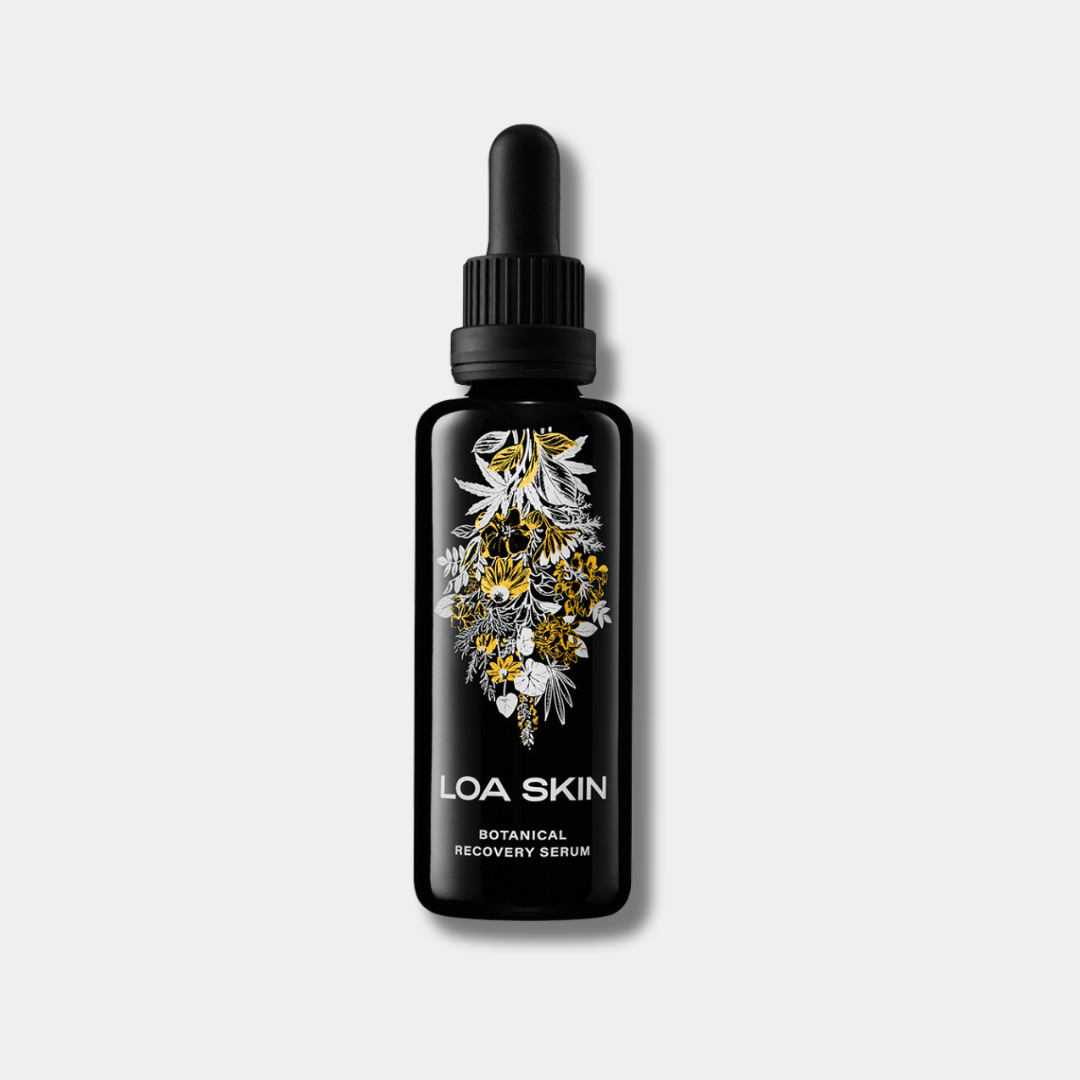
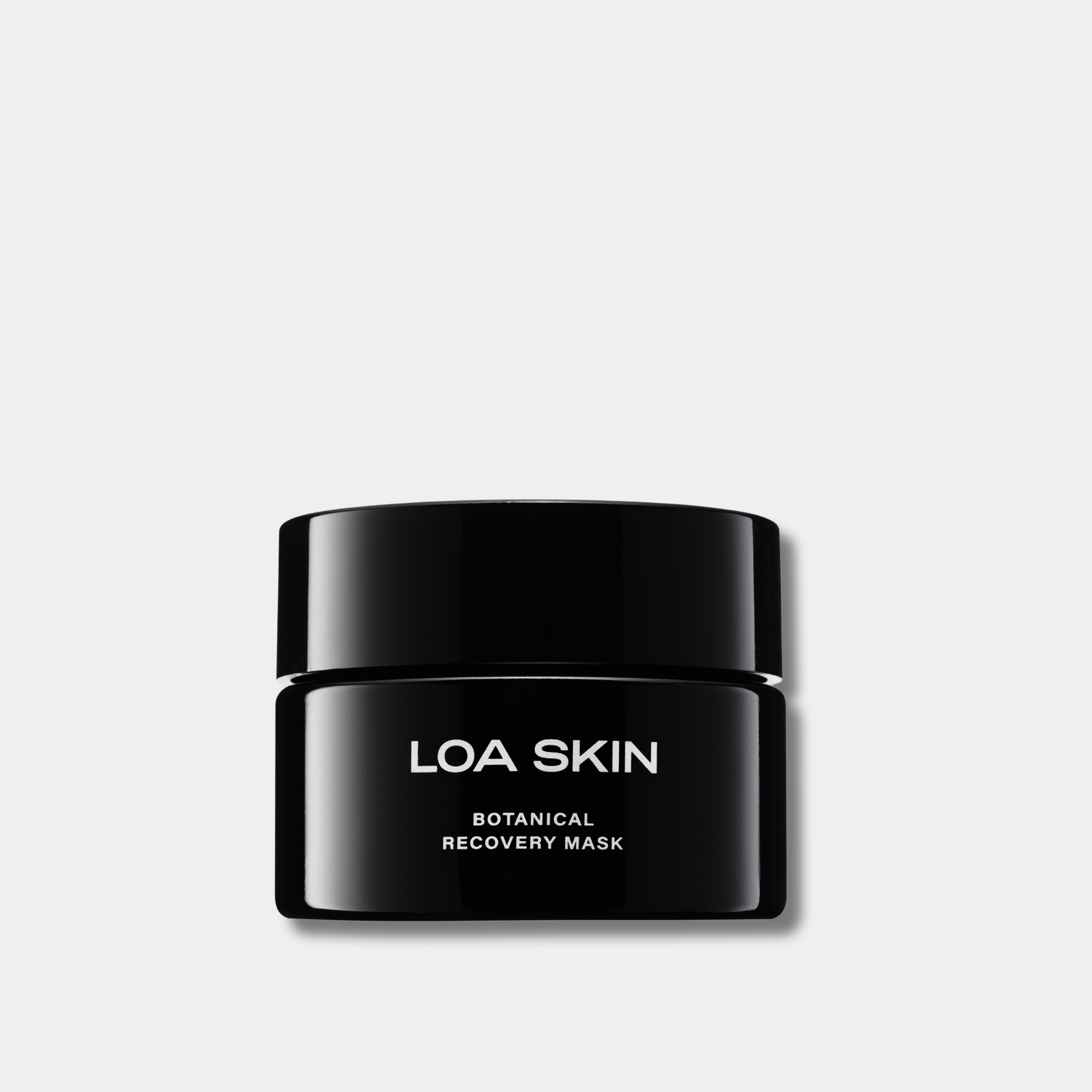



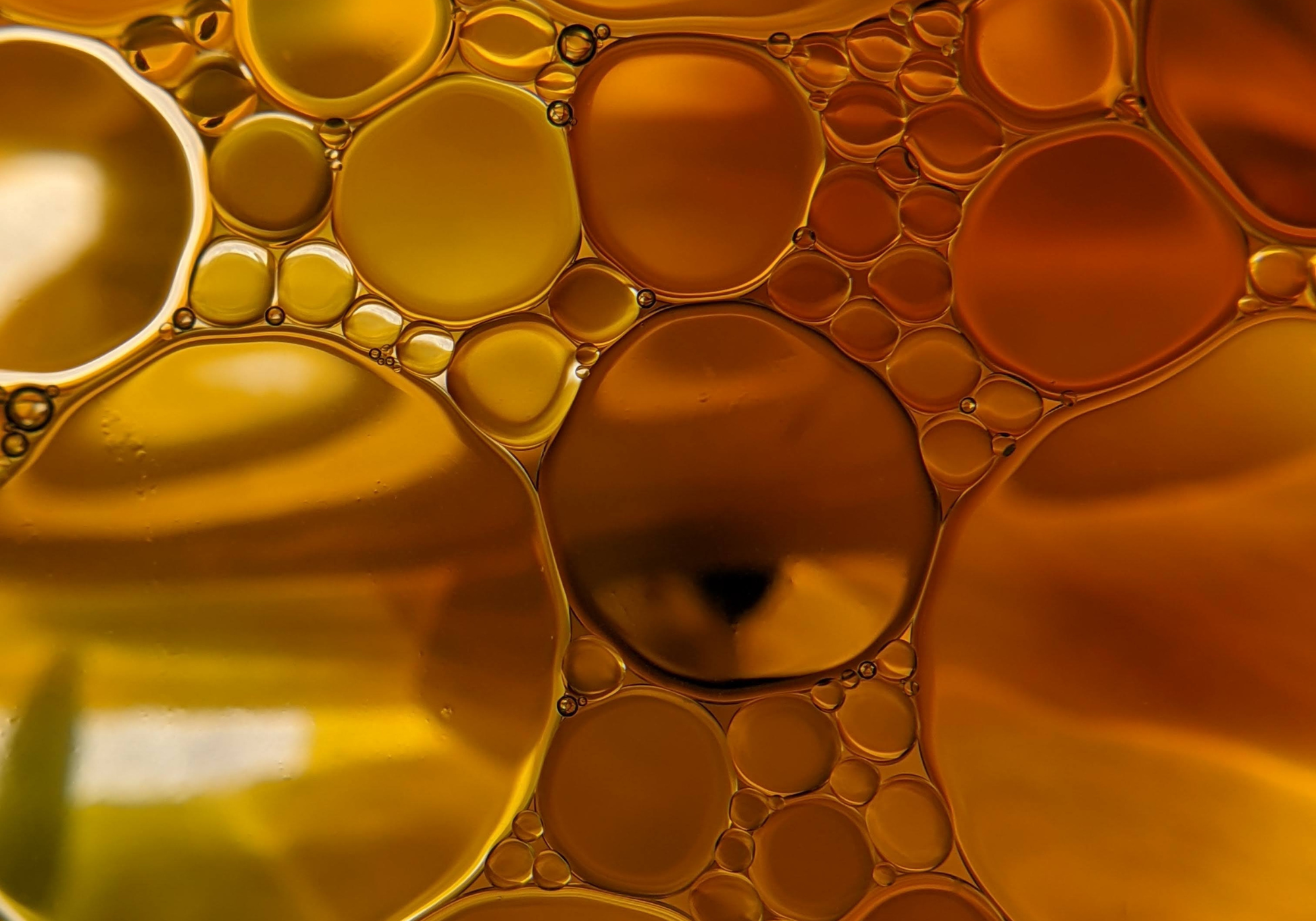



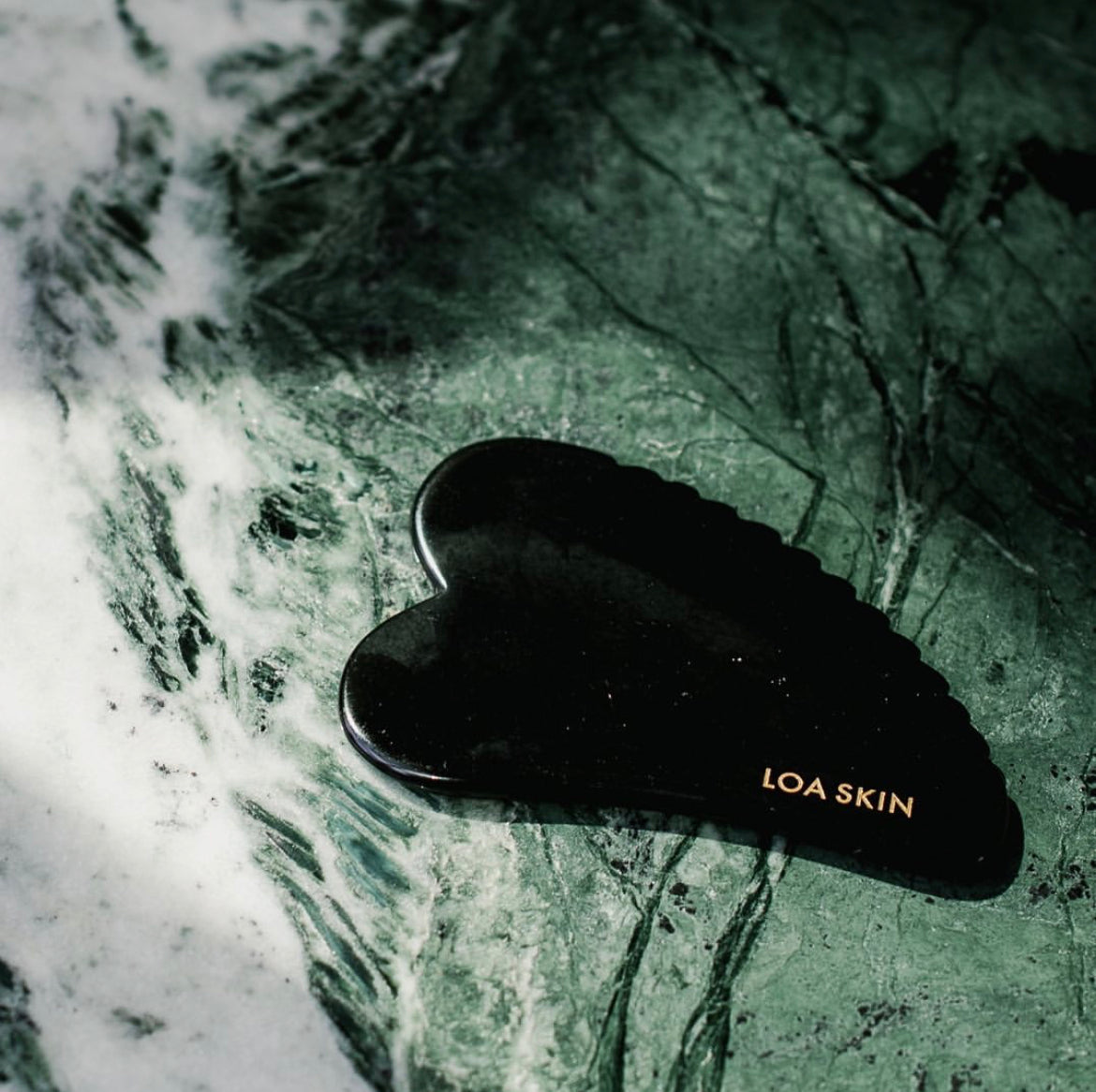
Leave a comment
This site is protected by reCAPTCHA and the Google Privacy Policy and Terms of Service apply.